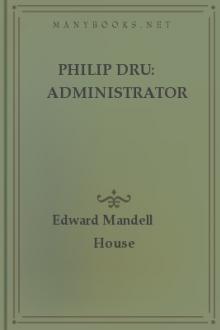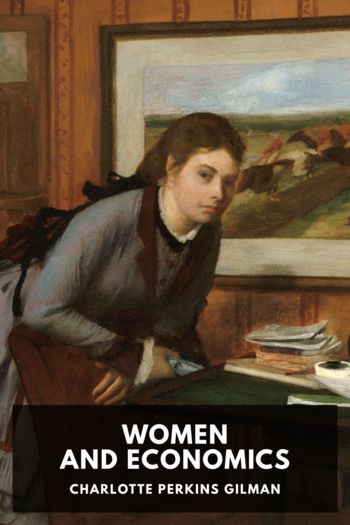My Spiritual Journey, Dalai Lama [best short books to read .TXT] 📗

- Author: Dalai Lama
Book online «My Spiritual Journey, Dalai Lama [best short books to read .TXT] 📗». Author Dalai Lama
To ensure its control over Tibetan society, the Chinese Communist Party assumed the right to control reincarnation lineages. So that they are not sequestered by Beijing authorities, child lamas are placed under careful protection by their families. In the greatest secrecy, smugglers take them to Nepal or India. There they join monasteries that provide a religious education suitable for their future responsibilities.
In May 1995, the Dalai Lama confirmed Gendhun Chökyi Nyima, a six-year-old boy, as the reincarnation of the Tenth Panchen Lama, the second-highest dignitary in Tibetan Buddhism. Two days later the Chinese Council of Religious Affairs declared this choice “illegal and invalid.” The same day the religious dignitary in charge of the search for the child lama, Chadral Rinpoche, was arrested and imprisoned for collusion with “the Dalai Lama clique.” A few weeks later the Eleventh Panchen Lama and his parents disappeared. Ever since July 1995, he has been kept in a supervised residence in a place held secret, thus becoming the youngest political prisoner in the world. Legislating like King Ubu in religious affairs, the Chinese Communist Party chose another child and enthroned him in a puppet ceremony. Despite the repeated protests of the international community, we are still without news of Gendhun Chökyi Nyima, the recognized Eleventh Panchen Lama according to authentic ritual.
Recently, the Chinese authorities made known their desire to exercise increased control over lineages. Thus, in August 2007 the official Chinese news agency announced a new rule about the recognition of “living buddhas,” an expression the Chinese use to designate reincarnate masters. Henceforth, “all requests for recognition of a reincarnation of a ‘living buddha’ must be approved by the Bureau of Religious Affairs,” under penalty of law.
The Dalai Lama has commented on these measures with humor: “This bizarre decision proves that its authors, who somehow pride themselves in delivering ‘reincarnation permits,’ understand nothing about either reincarnation or Buddhism. They think all that’s necessary is a decree or a rule to extend their control over people’s minds. It doesn’t work like that. If they were even a tiny bit attentive to the reality that’s all around them, they would realize this.”16
This regulatory control over lineages occurs in a context where the age of the Fourteenth Dalai Lama inevitably poses the question of his succession. Beijing has decided to regulate succession, scorning the moral and spiritual right of the Tibetans. According to Samdhong Rinpoche, prime minister of the Tibetan government in exile, “It is not the Dalai Lama who took the initiative to talk about his succession, but the People’s Republic of China. The Chinese are very anxious about his reincarnation, which they want to choose themselves. So they hope that the present Fourteenth holder of the title won’t live much longer, and they spread rumors saying the Dalai Lama has terminal cancer, so they can try to guess the nomination of his successor. It is clear that they’re doing everything they can to impose a new Dalai Lama under their control. It is crucial for the Tibetan people to define the designation procedure for the Fifteenth Dalai Lama.
“His Holiness is the only one, since the First Dalai Lama, to have lived so long, and he has to consider his succession, since his job isn’t over yet. The problem of a regency comes up. It is too complex to wait for a child Dalai Lama to grow up until he’s an adult. His Holiness had to take on his responsibilities when he was very young, and that was difficult. His successor will have to be of an age to take on his functions when the time comes. That is why the Dalai Lama is thinking about appointing a madé tulku during his lifetime, literally a ‘reincarnation before death,’ following a tradition by which the master, before dying, transfers the essence of his spiritual realization to his successor.”
In the speech he gave when he presented the Nobel Peace Prize to the Dalai Lama, Egil Aarvik observed: “The process of recognizing a reincarnation implies entering what is, for a Westerner, terra incognita, where beliefs, thought and action exist in a dimension of existence of which we are ignorant, or that perhaps we have simply forgotten.”17
Even if the Dalai Lama readily states that he is “no one special,” his life is not ordinary, in the sense that it does not begin with his birth and will not end with his death. The holder of the lineage of awakened Compassion, he radiates from a universal dimension. How do profound states of awareness contribute to this, revealed by meditation and Buddhist practice? That is what his statements as a monk in the following chapter will reveal. They shed light on the formidable humanity of a human being who “makes us feel good about being human. About being alive at a time when someone like him is around.”18
PART TWO
As a Buddhist Monk
3
Transforming Oneself
My Ideal: The Bodhisattva
My identity as a monk
IOFTEN INTRODUCE MYSELF AS a simple Buddhist monk because my personality and my identity have been built around my commitment as a monk. Although I sometimes feel a very strong karmic link with the Dalai Lamas who came before me, I consider myself a monk first of all. I am a monk before I am the Dalai Lama!
This is such a clear certainty, and it’s so deeply rooted in my mind, that I even remember it when I’m dreaming. Even during the worst part of a nightmare, I don’t forget that I am a monk. But I’ve never dreamed I was the Dalai Lama.
By my lights, these reactions at a level beyond intellectual control prove that at the bottom of my heart there is the indelible imprint of my state as a monk.





Comments (0)